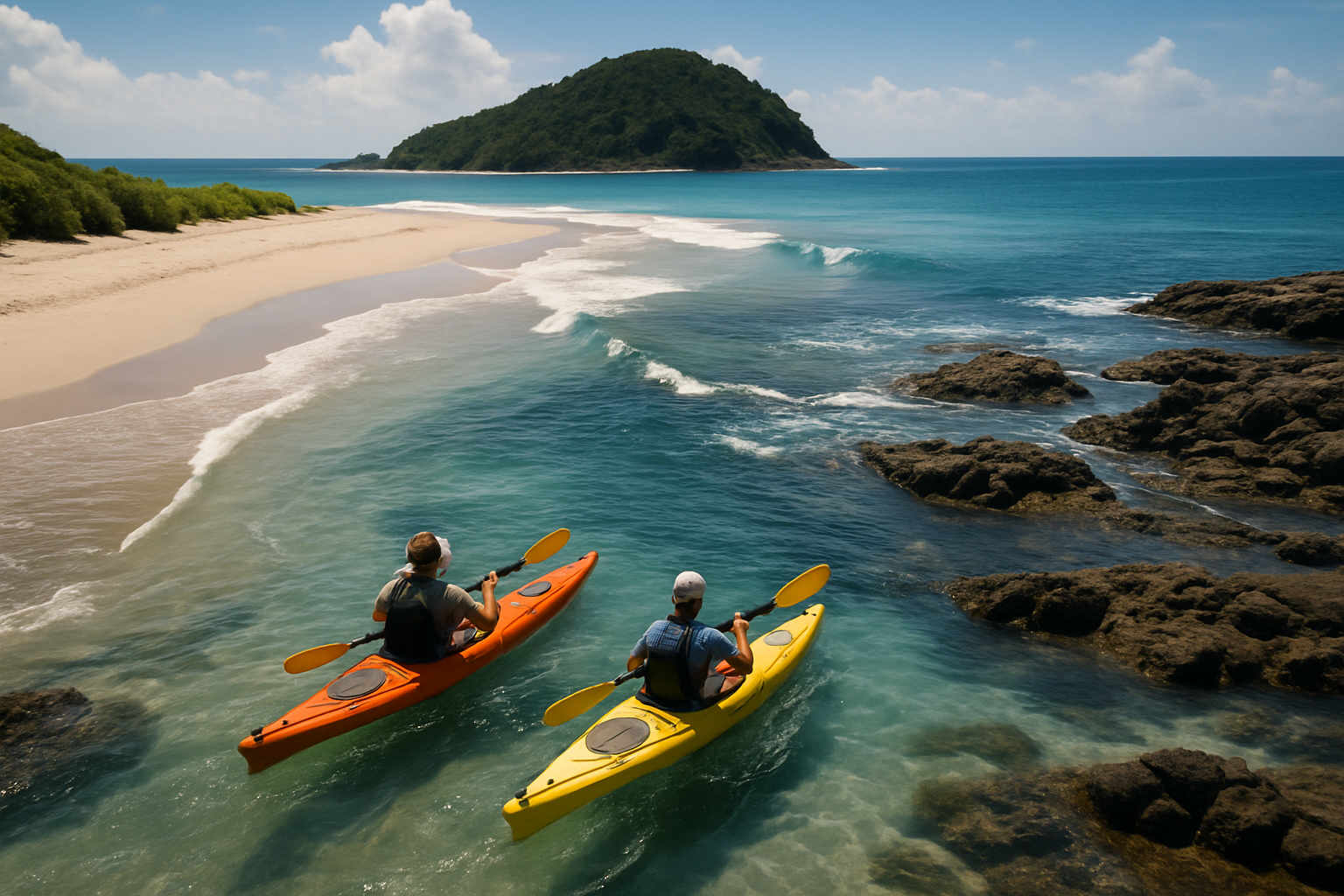Tidal Tourism: Exploring Coastal Destinations Through Ebb and Flow
The rhythmic dance of tides shapes coastlines and marine ecosystems worldwide, but for intrepid travelers, it's becoming the heartbeat of a new travel trend. Tidal tourism invites adventurers to sync their explorations with the ebb and flow of the sea, unlocking hidden wonders and ephemeral experiences. This emerging approach to coastal travel offers a unique lens through which to view familiar shores and discover secluded marvels, all while fostering a deeper connection with the natural world's timeless cycles.

The concept isn’t entirely new; coastal communities have long lived in harmony with tidal rhythms. However, the modern traveler’s increasing desire for unique, Instagram-worthy moments and eco-conscious experiences has brought tidal tourism to the forefront. Travel agencies and local guides are now offering specialized tours and accommodations that revolve around optimal tide times, allowing visitors to witness phenomena like bioluminescent beaches or explore vast tidal flats teeming with marine life.
Destinations Embracing the Tidal Wave
Certain destinations have become synonymous with tidal tourism due to their dramatic tidal ranges or unique coastal features. The Bay of Fundy in Canada, boasting the world’s highest tides, draws visitors to witness its twice-daily transformation. Here, travelers can kayak around towering rock formations at high tide and then walk on the ocean floor just hours later.
In France, Mont Saint-Michel becomes an island at high tide, creating a magical spectacle that changes with each visit. The Wadden Sea, stretching along the coasts of Denmark, Germany, and the Netherlands, offers vast mudflats for wadlopen (mud walking) at low tide, revealing a rich ecosystem normally hidden beneath the waves.
Even urban areas are tapping into this trend. London’s Thames Barrier Park provides a unique perspective on the city’s tidal defenses, while guided walks along the Thames foreshore allow history enthusiasts to uncover artifacts revealed by the receding tide.
The Science and Art of Tidal Planning
Successful tidal tourism requires a blend of scientific understanding and careful planning. Travelers must familiarize themselves with tide tables, understanding the differences between spring and neap tides, and how factors like moon phases and coastline shape influence tidal patterns.
This knowledge not only enhances the travel experience but is crucial for safety. Many tidal tourist activities, such as visiting Mont Saint-Michel’s bay or exploring the Hopewell Rocks in New Brunswick, come with strict time windows dictated by the tides. Miscalculating can lead to being stranded or facing dangerous rising waters.
Tour operators specializing in tidal tourism often employ marine biologists or local experts who can interpret tidal charts and provide insights into the best times and locations for various activities. These guides play a crucial role in ensuring both the safety and enrichment of tidal experiences.
Environmental Impact and Sustainable Practices
As with any form of tourism, the environmental impact of tidal tourism is a growing concern. The increased foot traffic in intertidal zones can disrupt delicate ecosystems and marine habitats. Responsible tidal tourism practices are emerging, emphasizing education, conservation, and minimal impact exploration.
Many tidal tourism hotspots now implement strict visitor quotas and designated pathways to protect sensitive areas. In the Wadden Sea, for instance, guided mud walks are carefully managed to minimize disturbance to bird nesting sites and seal colonies.
Tidal tourists are often encouraged to participate in citizen science projects, such as recording species sightings or participating in beach clean-ups. This hands-on involvement not only enhances the travel experience but also contributes to coastal conservation efforts.
The Future of Tidal Tourism
As climate change continues to impact sea levels and coastal landscapes, tidal tourism may take on new significance. It offers a tangible way for travelers to witness and understand these changes firsthand, potentially fostering greater environmental awareness and action.
Technological advancements are also shaping the future of tidal tourism. Augmented reality apps are being developed to overlay historical or biological information onto tidal landscapes, enhancing educational aspects. Underwater drones and live streaming technology may soon allow virtual tidal tourists to explore these environments remotely, expanding access while reducing physical impact.
Tidal Tourist Tips
-
Always check local tide tables and consult with experts before venturing into tidal areas
-
Wear appropriate footwear for walking on slippery or muddy surfaces
-
Carry a waterproof bag for electronics and valuables
-
Be aware of your surroundings and potential escape routes as tides can come in quickly
-
Respect local wildlife and ecosystems by observing from a distance and not removing any natural objects
-
Consider joining a guided tour for safer and more informative experiences
-
Pack out all trash and consider participating in local beach clean-up efforts
Tidal tourism offers a fresh perspective on coastal travel, inviting adventurers to explore the ever-changing interface between land and sea. By aligning their journeys with nature’s rhythms, travelers can uncover hidden wonders, gain deeper insights into coastal ecosystems, and foster a greater appreciation for the dynamic forces shaping our planet’s shores. As this trend continues to evolve, it promises to transform how we experience and interact with coastal destinations, creating memorable adventures that ebb and flow with the tides themselves.





